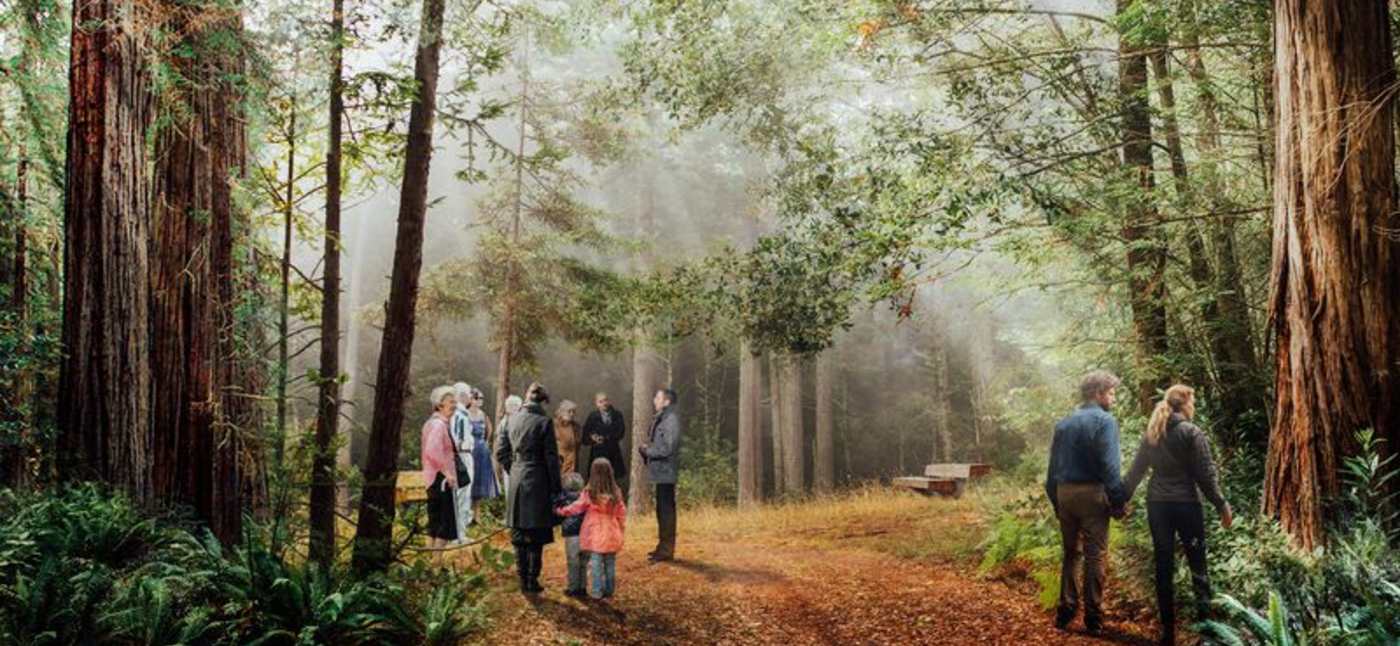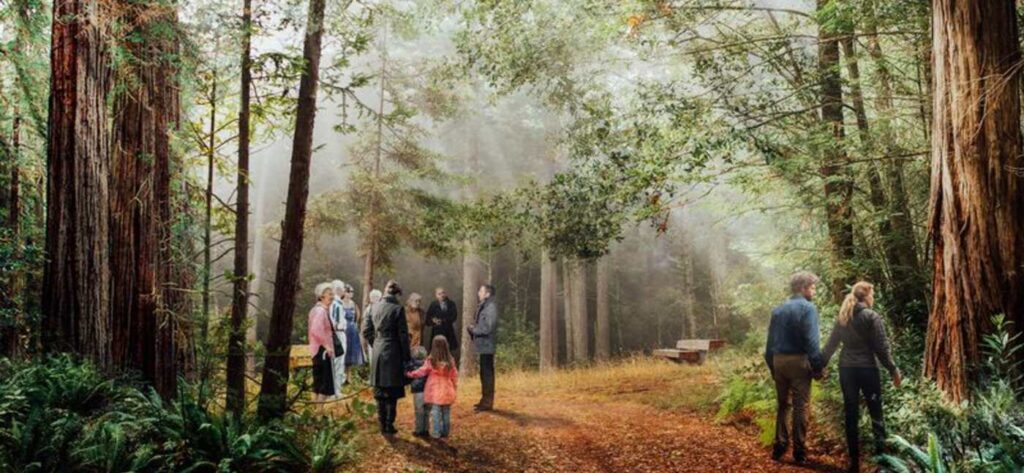
Across America, small parcels of forested land are being bought from private owners by a conservation group called Better Place Forests.
With the intention of providing the roots, trunk, and branches of a tree as the site of a loved one’s final resting place, the group is also ensuring that by law the forest will remain preserved forever.
They own and maintain “memorial forest preserves” in Connecticut, Massachusetts, California, Arizona, Minnesota, and soon Illinois. These preserves feature heritage sugar maple stands, California redwoods, quaking aspen colonies, views out across the Pacific or the Twin Lakes, and every tree is up for grabs for just a few thousand dollars.
“There’s this moment when you choose your tree, and it’s like nothing you’ve ever expected,” says Sandy Gibson, the CEO of Better Place Forests. “It’s this moment as you choose it, and you’re looking around and you realize this is what forever looks like.”
“This is where you’re going to be, and it’s a beautiful image: you’re in a beautiful place, you can hear the wind blowing through the trees, and it’s something we’ve heard from all of our customers after they choose their tree is that this feeling of peace, of knowing what the end of the journey looks like,” he adds.
Every year the funeral industry consumes 20 million feet of hardwood, 64,500 tons of steel, 1.6 million tons of concrete, and 5 million gallons of embalming chemicals.
RELATED: Dutch Man Invents Coffin That Turns Bodies Into Mushrooms: ‘We are nutrients, not waste’
“One of the most popular reasons to choose cremation is the idea that [people] want to take up less space, also to reduce the burden on the Earth,” says Gibson. “The environmental aspect of what we do is incredibly important to our customers.”
A healthy alternative
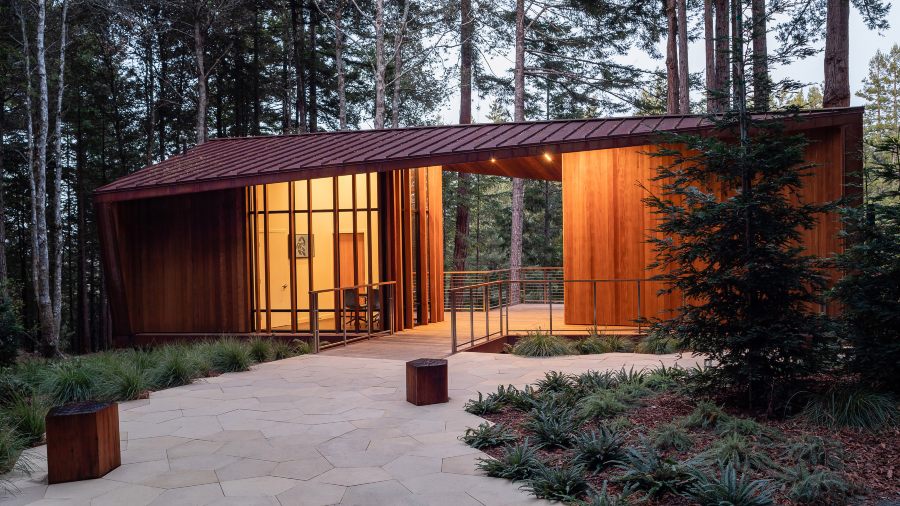
As the cost of traditional casket-service-cemetery funerals continues to rise ever higher in the U.S., it’s estimated that 80% of the Baby Boomer generation will chose cremation.
“If you wanted a 10 to 20 person family plot anywhere near a major city, I’d be incredibly surprised if you could find that for less than $200,000,” says Sandy, adding that despite the shift towards cremation, Americans haven’t lost the desire for place or ritual with their families.
“Our customers are drawn to Better Place Forests because they love the idea of being in nature, and leaving a legacy of nature. For those who are very religious, for them nature is the place they felt closest to God.”
The choice of cremation and the subsequent scattering-of-ashes ceremony releases the bereaved from the constraints of the traditional funerary service which is typical planned without much time and under duress of grief.
But in a funny way, that freedom creates a significant complication for some, in that what is perceived as a very important detail in one’s life story—their funeral, has to be imagined from within a far greater realm of possibilities. This, Sandy said, can create a sort of funerary writer’s block, which Better Place Forests helps people overcome, especially those who are environmentally minded.
“Part of it is this legacy of conservation; knowing that you contributed to the protection of a beautiful forest and then it’s protected for future generations because of something you did. When you walk on these forests that’s when it makes sense; we choose properties that are incredibly beautiful, trying to find properties that are iconic to each region.”
Very North American
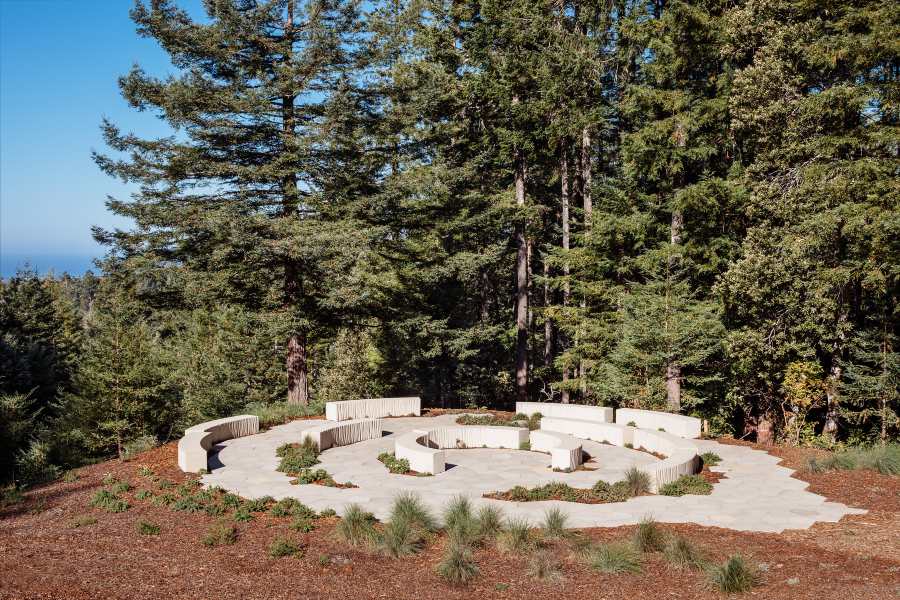
“Our costs are derived from buying forests and protecting them forever,” says Sandy in response to how he manages to undercut the cost of a traditional funeral.
While legal fees soak up the majority of the cost, part of the expense also includes customizable services either indoors or in the forest. Each tree can host several ash scattering ceremonies, and the cremation techniques employed ensure the ashes are optimally and rapidly turned into nutrients, merging spirit and soil for eternity.
One might say that Americans are uniquely suited to this sort of internment, as our connection with nature, particularly with our forests, changed the world. In 1872, we became the first ever nation to create a national park, and by 1906, we had created five others.
In the 19th century, Canada and the United States attracted all manner of Europeans to join in the timber industry, and immense forests containing magnificent trees quickly became iconic images of the New World.
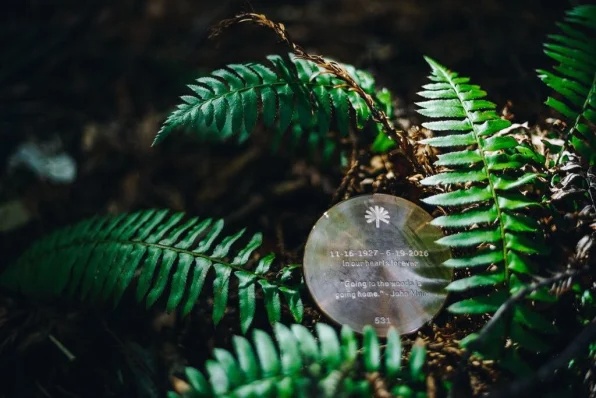
There was the era of the Mountain Man, the Gold Rush, the conservation movement sparked by Field and Stream Magazine, the Audubon Society, and the Sierra Club—all cultural epochs centered around extraordinary American landscapes, while throughout the 20th century our commitment to the protection of forests may have surpassed those of any other nation.
“One of the beauties of this job is we get to go around the entire United States and see what the different forests and landscapes look like everywhere, and they are very unique, and you see why people are connected to their woods,” says Sandy.
“What’s amazing is every region has their iconic tree. In Arizona people love aspens. It’s something magical; the idea that that aspen grove could be alive 8,000 years and keep sprouting new trees over time, it’s kind of an amazing thing to think about. On the east coast it’s chestnuts.”
“There’s a new forest we’ll be announcing soon where we’ll be able to plant some giant sequoias,” he adds excitedly. “How cool is that, to get to be a part of a reforesting of regional sequoias?”
Environmentalists of all stripes, from climate warrior activists to permaculture farmers, often talk about having a better relationship with nature. Our physical relationship with nature is very one-sided, but maybe changing our attitudes towards it could start with our eternal placement, namely one borne from a desire to give back, and not to be lodged stubbornly in a concrete burial vault within a chemically treated coffin.
GIVE BACK by Sharing This Story From the Woods With Pals…




















